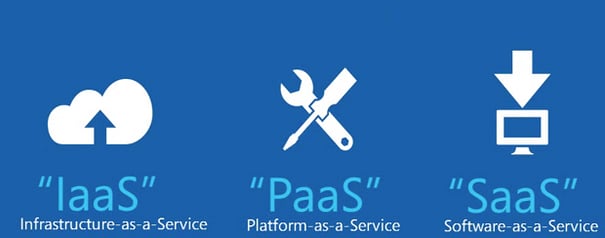
Image: antonioricardo.org
There are three fundamental models that make up the framework of cloud computing services:
- Infrastructure as a Service (IaaS): IaaS gives computers (mostly virtual machines) infrastructural resources;
- Platform as a Service (PaaS): PaaS provides a development environment to application developers; and
- Software as a Service (SaaS): SaaS offers users access to application software and databases.
For the purpose of this discussion let's focus on Infrastructure as a Service (IaaS). Like every other cloud computing service model, it makes computing resources available in a virtualized environment (the Cloud), using the Internet as a medium. The computing resources made available through IaaS provided are essentially in the form of virtualized hardware (also known as computing infrastructure). The resources provided through IaaS include network connectivity, server space (virtual), load balancers, bandwidth, and IP addresses. The hardware resources are derived from a combination of networks and servers spread across various data centers. An IaaS-using client is provided access to the virtualized systems that are used to develop self-owned IT platforms.
IaaS can be used by businesses to develop cost-effective and scalable IT solutions. The technicalities and costs of maintaining the root hardware are borne by the cloud provider. A major advantage of IaaS is that in situations where the scale of a client’s operations flutter, or a client desires to expand, it can make use of the cloud resources whenever needed, instead of purchasing, installing, and integrating the hardware itself.
Here are some important examples of how a business can incorporate IaaS into its processes:
- Enterprise infrastructure: businesses that desire to expand can tune their infrastructure to reflect their growth and use private clouds (which are accessible to only the said business) to safeguard the storage and transmit and store sensitive data.
- Cloud-hosting: A cloud-hosted website can benefit from the redundancy occasioned by numerous physical servers, which helps in dealing with unexpected demands on the website.
- Virtual Data Centers (VDC): VDCs can be harnessed to provide optimized cloud-hosting capacities or enterprise IT infrastructure.
IaaS system models have the following benefits and capabilities:
- Scalability -Resources are available whenever you require it and, therefore, there is no time wastaged in increasing your capacity or the dissipation of capacity that is not used.
- No hardware investments –The root hardware supporting IaaS platforms are set up and maintained by the cloud provider, saving you time and money.
- Utility style costing -IaaS is an on-demand service and can be utilized whenever you want. You only have to pay for the services of which you actually made use.
- Location independence - IaaS platforms give you access to the cloud environment wherever and whenever you need access. All that is required is internet connectivity.
- No single point of failure - If a single server or network crashes, the platform would not be affected as a result of numerous other redundancy configurations and hardware resources that remain integrated to ensure consistency in performance.
The Infrastructure as a Service (IaaS) model is rapidly gaining ground in the cloud-computing environment. This is due to the fact that it’s cost-effective, scalable, and offers utility-style hosting.
